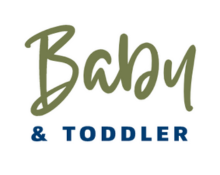
The laid back breastfeeding position, also known as the biological nurturing position or reclined position, is a relaxed and comfortable position that mimics the natural feeding instincts of both the mother and the baby. Here’s how you can achieve the laid back position:
Find a comfortable place to recline, such as a bed or a couch, with pillows or cushions to support your back, neck, and arms. You want to be in a semi-reclined position, leaning back at an angle that feels comfortable for you.
Undress your upper body and your baby down to their diaper, allowing maximum skin-to-skin contact. Skin-to-skin contact can help stimulate your baby’s feeding instincts and promote bonding.
Place your baby on your chest, tummy-to-tummy with you, in a way that gravity supports their body against yours. You can use pillows or rolled-up blankets to prop up your baby if needed.
Allow your baby to find their way to the breast. Your baby’s natural instincts will guide them to move towards the breast, root, and initiate breastfeeding. Support your baby’s head and neck with your hand if needed.
Your baby’s body will naturally mold to yours, and they will find their preferred position for nursing. You may notice your baby’s head tilting back slightly, allowing their mouth to reach your breast.
Once your baby is in position, you can assist by gently guiding your breast towards their mouth, making sure they have a wide latch. Their lower lip and tongue should be positioned beneath the nipple, while their top lip flanges outward.
Relax your body and let gravity and your baby’s instincts do the work. You may find that your baby has more control over the feeding process in this position.
Use your free hand to support your breast if needed or to stroke your baby’s back and provide comfort.
Enjoy the relaxed and intimate feeding experience in the laid back position. It allows you to connect with your baby while promoting a deep latch and effective milk transfer.
Remember, every mother-baby pair is unique, and it may take some practice to find the most comfortable and effective position for breastfeeding. If you need assistance or have concerns, don’t hesitate to seek support from a lactation consultant or healthcare professional.
